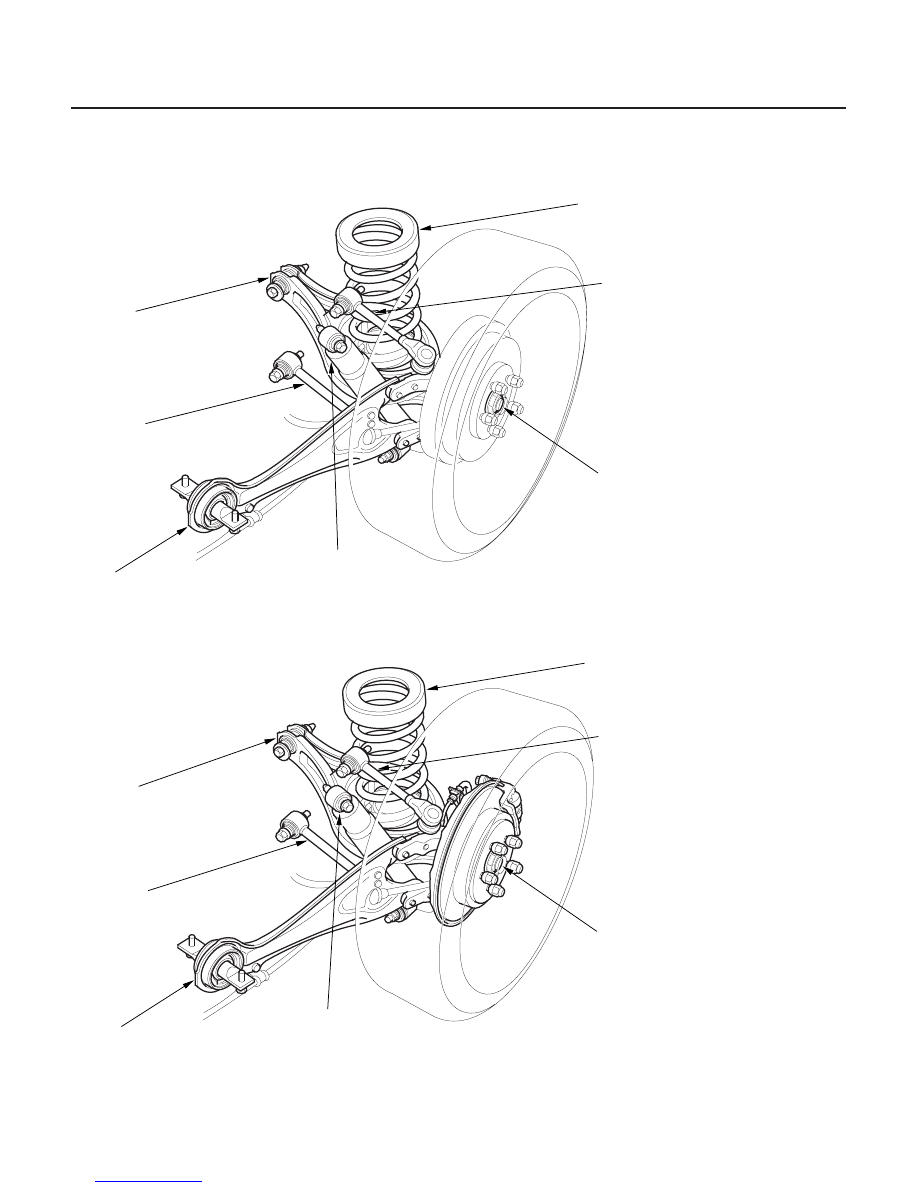Honda Odyssey 2004. Manual - part 291

*01
*02
S0X4A00B44100000000DAAT00
REAR DRUM BRAKE TYPE: ’99-01 models
REAR DISC BRAKE TYPE: ’02-04 models
18-4
Front and Rear Suspension
Component Location Index (cont’d)
REAR DAMPER
HUB/BEARING
TRAILING ARM
LOWER ARM A
LOWER ARM B
UPPER ARM
SPRING/
BUMP STOP
REAR DAMPER
HUB/BEARING
TRAILING ARM
LOWER ARM A
LOWER ARM B
UPPER ARM
SPRING/
BUMP STOP
Removal, page 18-30
Inspection, page 18-30
Installation, page 18-31
Replacement, page 18-22
Removal/Installation, page 18-29
Removal/Installation,
page 18-27
Removal,
page 18-28
Installation,
page 18-28
Removal/Installation, page 18-26
Removal, page 18-33
Installation, page 18-34
Removal, page 18-30
Inspection, page 18-30
Installation, page 18-31
Replacement, page 18-22
Removal/Installation, page 18-29
Removal/Installation,
page 18-27
Removal,
page 18-28
Installation,
page 18-28
Removal/Installation, page 18-26
Removal, page 18-33
Installation, page 18-34
03/07/29 09:51:03 61S0X050_180_0004